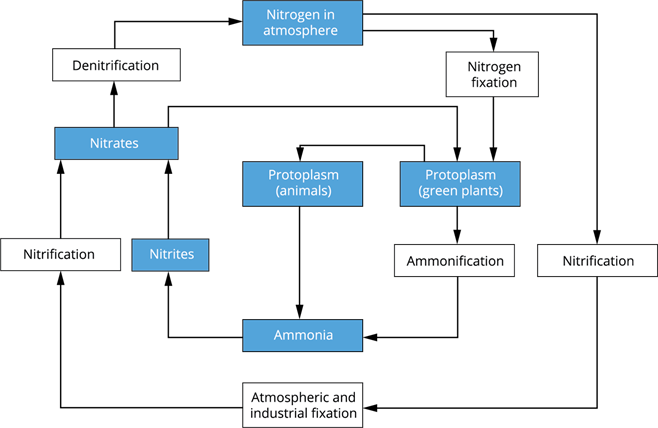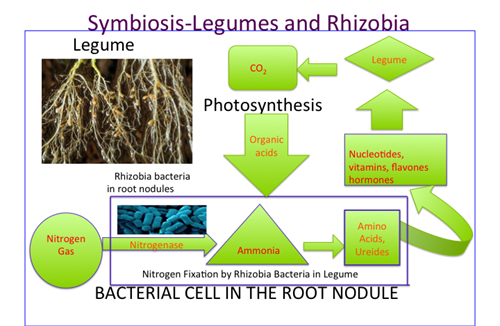
PUMPA - SMART LEARNING
எங்கள் ஆசிரியர்களுடன் 1-ஆன்-1 ஆலோசனை நேரத்தைப் பெறுங்கள். டாப்பர் ஆவதற்கு நாங்கள் பயிற்சி அளிப்போம்
Book Free DemoNitrogen is one of the important nutrients crucial for the survival of living organisms. Nitrogen is an essential component of many biomolecules - DNA, proteins, and also chlorophyll. It is present very abundantly in the atmosphere and contains about 78\% nitrogen. But it is inaccessible in the atmospheric form to most living organisms, including plants and animals.
Thus, nitrogen is a scarce resource used only when atmospheric nitrogen is converted into a different form. Plants and animals can only utilise nitrogen in the form of ammonia, nitrates, or amino acids.
The transformations of nitrogen include:
- Nitrogen fixation
- Nitrogen assimilation
- Ammonification
- Nitrification

Nitrogen cycle
Nitrogen fixation:
The conversion of inert atmospheric nitrogen to the reactive compounds that living organisms can use is called nitrogen fixation.
The conversion of atmospheric nitrogen to other forms is through several bacteria and blue-green algae (cyanobacteria).
Leguminous crops include the pulses like clover, beans, lentils, lupins, cowpea, pigeon pea, peas, chickpeas (gram), groundnut, and the soya bean. These contain nitrogen-fixing bacteria in their root nodules.

Nitrogen fixation by nitrogen-fixing bacteria in their root nodules
These plants have a symbiotic relationship with rhizobium (nitrogen-fixing bacteria). The symbiotic nitrogen-fixing bacteria invade the host plants' root hairs, where it multiplies and stimulates the formation of root nodules.
Within the nodules, Rhizobium present in the leguminous plants fixes atmospheric nitrogen in the form of ammonia, which the host plant utilizes for its growth and development. The presence of the nitrogenase enzyme in the bacteria helps in nitrogen fixation.

Nitrogen fixation - symbiotic relationship with legumes and rhizobium
Frankia is also an example of another symbiotic bacteria that also fix nitrogen. They fix nitrogen in certain dicotyledonous species.
Reference:
https://upload.wikimedia.org/wikipedia/commons/3/31/Nitrogen_fixation_Fabaceae_en.svg
https://upload.wikimedia.org/wikipedia/commons/2/20/Symbiosis_in_Root_Nodules.png